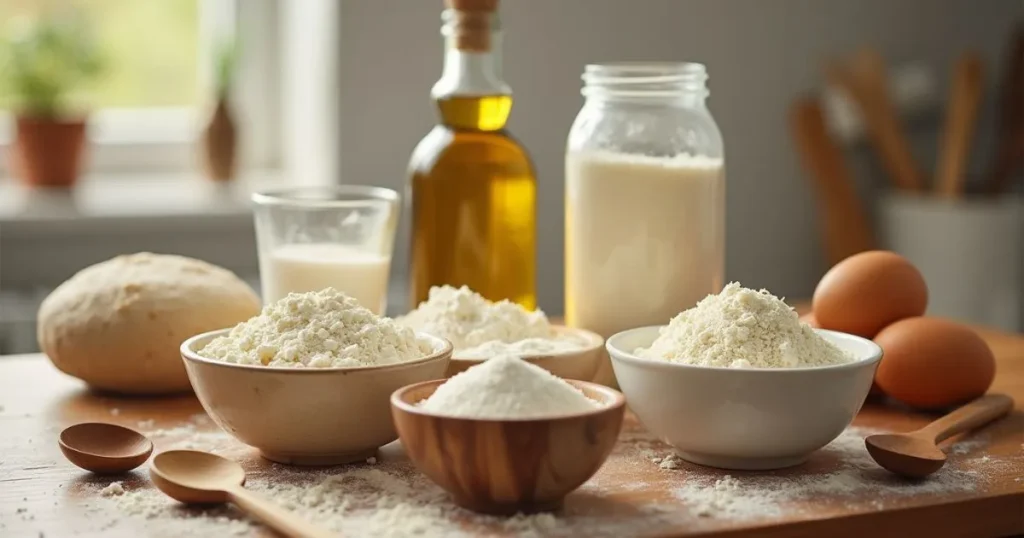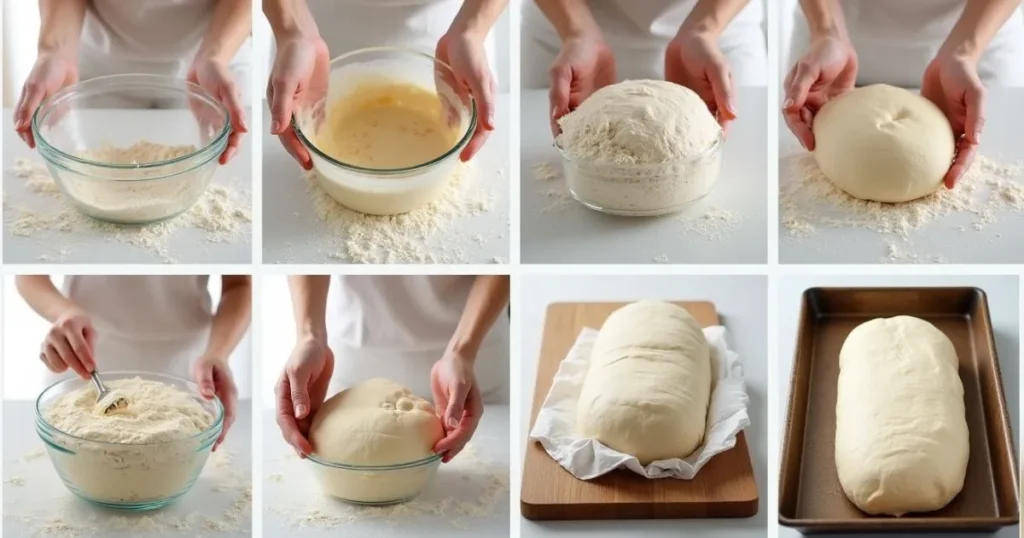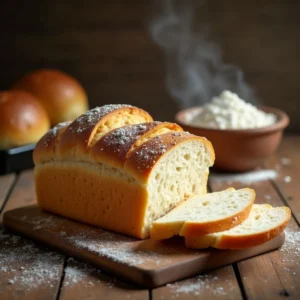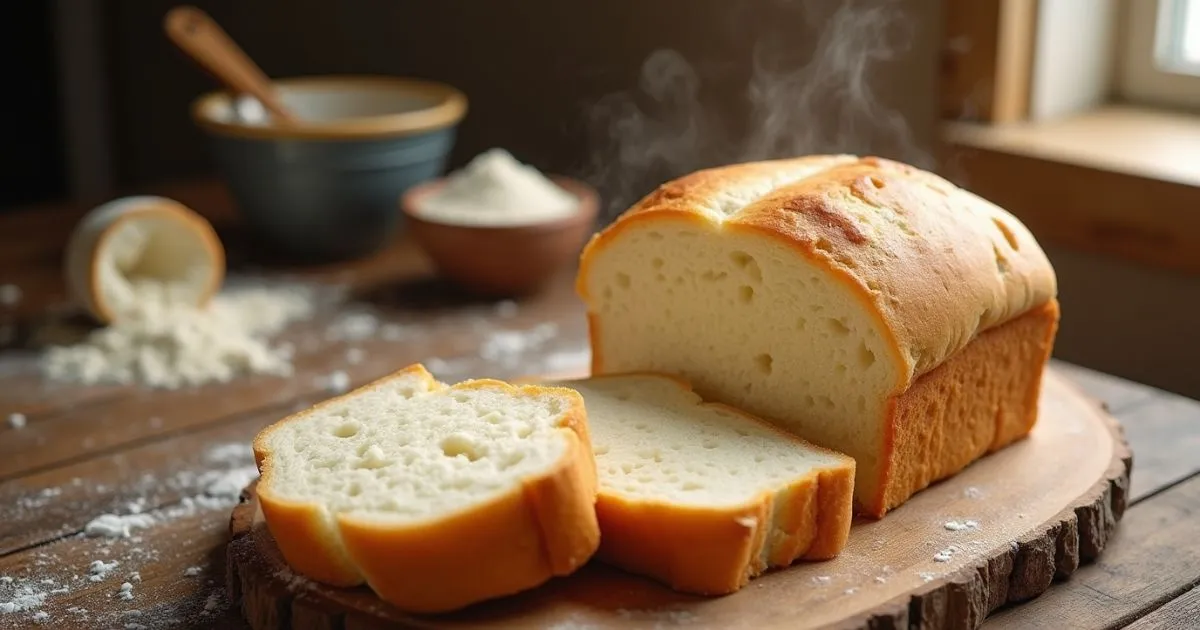Have you ever wondered how some recipes manage to rise perfectly every time, delivering light, airy, and irresistible results? Whether you’re baking fluffy bread, delicate cakes, or savory pastries, mastering rising recipes can take your culinary skills to the next level. These recipes aren’t just about following instructions—they’re about creating moments of joy and satisfaction in the kitchen. With simple ingredients and a touch of care, you’ll soon discover how versatile and rewarding these creations can be. Let’s dive into the secrets of rising recipes you’ll absolutely fall in love with!
Table of Contents
Key Benefits of Rising Recipes
Rising recipes are a game-changer in the kitchen, offering endless possibilities for delicious and satisfying creations. Whether you’re a seasoned chef or a baking beginner, these recipes provide:
- Fluffy and Light Textures: From airy bread to delicate cakes, a well-risen dish adds a special touch to any meal.
- Versatility: Rising recipes cater to sweet and savory dishes alike, making them perfect for any occasion—be it breakfast, dinner, or dessert.
- Confidence in Baking: Understanding the science behind rising agents like yeast, baking powder, and baking soda helps you master the art of consistent results.
- Healthier Options: Many rising recipes can be adapted to include whole grains, gluten-free flours, or natural sweeteners without compromising flavor or texture.
- Budget-Friendly Creativity: Homemade rising recipes save money while allowing you to customize flavors and ingredients to suit your taste.
Ready to unlock the magic of rising recipes? Let’s explore the essentials you’ll need and the techniques that make these recipes so rewarding.
Ingredients for Rising Recipes

When it comes to creating perfectly risen dishes, choosing the right ingredients is essential. Here’s what you’ll need to achieve light, fluffy, and flavorful results:
Core Ingredients
- Flour: All-purpose flour works well for most recipes, but you can experiment with bread flour, whole wheat flour, or gluten-free blends for specific needs.
- Rising Agents:
- Yeast: Ideal for bread, rolls, and other doughs that require proofing. Opt for active dry or instant yeast, depending on your recipe.
- Baking Powder: Perfect for quick breads, pancakes, and muffins.
- Baking Soda: Often paired with acidic ingredients like buttermilk or vinegar for a chemical reaction that creates lift.
- Liquids: Water, milk, or plant-based alternatives add moisture and help activate the rising agents. Warm liquids (around 110°F for yeast) are crucial for proper activation.
Flavor Enhancers
- Sweeteners: Granulated sugar, honey, or maple syrup not only add sweetness but also feed the yeast in dough recipes.
- Salt: Balances flavors and strengthens dough structure, ensuring your bread or pastry holds its shape.
- Fats: Butter, oil, or alternatives like coconut oil add richness and improve the overall texture.
Optional Add-Ins
- Herbs and Spices: Fresh rosemary, cinnamon, or nutmeg can elevate the flavor of your creations.
- Nuts, Seeds, or Dried Fruits: These provide texture and a burst of flavor, perfect for sweet or savory options.
By keeping these ingredients on hand, you’ll be ready to tackle any rising recipe with confidence. Now that you’ve gathered your essentials, let’s dive into the step-by-step process to bring your creations to life!
How to Make Rising Recipes

Creating perfectly risen recipes may seem tricky at first, but with these simple steps, you’ll feel like a pro in no time. Let’s break it down:
1. Prepare Your Ingredients
- Measure all your ingredients accurately. Use a kitchen scale for the best results, especially for flour.
- Make sure rising agents like yeast, baking powder, or baking soda are fresh and within their expiration dates.
2. Mix the Dough or Batter
- For yeast-based recipes:
- Activate the yeast by mixing it with warm water (110°F) and a pinch of sugar. Let it sit for 5-10 minutes until foamy.
- Gradually combine the activated yeast with flour, salt, and other ingredients to form a soft dough.
- For quick recipes (using baking powder or soda):
- Whisk dry ingredients together first.
- Mix wet ingredients separately, then combine with the dry ingredients just until incorporated. Avoid overmixing to prevent a dense texture.
3. Let the Dough Rise (If Applicable)
- Place yeast dough in a greased bowl, cover with a clean towel, and let it rise in a warm, draft-free spot. Aim for the dough to double in size, which typically takes 1-2 hours.
- For recipes requiring a second rise (like bread loaves), shape the dough, then let it rise again before baking.
4. Bake with Care
- Preheat your oven to the temperature specified in the recipe—this ensures consistent heat for proper rising during baking.
- Use the middle rack for even cooking, and avoid opening the oven door too often, as it can disrupt the baking process.
5. Check for Doneness
- The bottom of the bread should produce a hollow sound when tapped.
- Cakes and quick breads are done when a toothpick inserted into the center comes out clean.
With these steps, you’ll achieve beautifully risen results every time. Don’t forget to experiment with different techniques and flavors to make each recipe your own! Ready to take it up a notch? Explore our pro tips and variations next.
Pro Tips and Variations
Ready to take your rising recipes to the next level? Here are some pro tips and fun variations to ensure your dishes stand out and rise to perfection every time!
Pro Tips for Perfect Results
- Check the Temperature: For yeast-based recipes, make sure your liquids are warm (around 110°F). If they’re too hot, they can kill the yeast; too cold, and the yeast won’t activate properly.
- Don’t Overwork the Dough: When working with dough, be gentle. Over-kneading can lead to dense, heavy results. Aim for just the right amount of kneading to develop the gluten.
- Use a Damp Towel for Rising: To keep dough from drying out while it rises, cover it with a damp kitchen towel. This helps maintain the moisture and creates a perfect environment for the yeast.
- Rest Before Baking: Once your dough has risen, give it a little time to rest before baking. This ensures even texture and a better rise.
Variations to Try
- Vegan Rising Recipes: Replace dairy products with plant-based alternatives like almond milk and coconut oil. Use egg replacements (like flaxseed or chia) for cakes and quick breads.
- Low-Carb Rising Recipes: Try using almond flour or coconut flour instead of all-purpose flour. You can also incorporate egg whites for a lighter texture.
- Sweet and Savory Twists: Add spices like cinnamon, nutmeg, or cardamom to sweet breads or cakes for extra flavor. For savory recipes, consider adding fresh herbs, garlic, or grated cheese to your dough for a savory rise.
Perfect Pairings
- For Bread: Pair your freshly risen bread with butter, jam, or even a hearty soup.
- For Cakes and Muffins: Serve with whipped cream, a scoop of ice cream, or fresh fruit for a delightful dessert experience.
With these tips and variations, you’ll be able to experiment and perfect your rising recipes, no matter the occasion! Whether you’re baking for family or friends, these pro insights will help you achieve mouthwatering results.
Serving Suggestions
Now that your rising recipes are ready to shine, it’s time to think about how to serve and enjoy them. Whether you’re preparing a light loaf of bread or a sweet, fluffy cake, the way you present your dish can elevate the whole experience. Here are some delicious serving ideas to inspire you:
For Breads and Rolls
- Classic Pairing: Serve your freshly baked bread with a pat of butter or a drizzle of olive oil. For added flavor, sprinkle sea salt or herbs on top before serving.
- Sandwiches: Use soft, homemade bread for hearty sandwiches. Add fresh ingredients like leafy greens, tomatoes, and cheese, or go with a classic avocado toast.
- Breakfast Spread: Slice up your bread or rolls and pair them with jam, honey, or peanut butter for a comforting start to the day.
For Cakes and Muffins
- With Cream: Top cakes or muffins with a dollop of whipped cream or a scoop of vanilla ice cream for a sweet, indulgent treat.
- Fresh Fruit: For a lighter option, serve alongside seasonal fruit like berries, peaches, or citrus. The sweetness of the fruit complements the texture of the cake.
- For Special Occasions: Decorate your cake with a dusting of powdered sugar, edible flowers, or a drizzle of frosting to make it extra special for birthdays or celebrations.
For Quick Breads and Savory Dishes
- Pair with Soup or Salad: Serve savory rising recipes like garlic bread or herb rolls alongside a warm bowl of soup or a fresh salad for a balanced meal.
- As a Side: Quick breads make the perfect accompaniment to main dishes like roasted meats or vegetarian stews, providing a satisfying contrast in texture and flavor.
Serving your rising recipes with care and creativity adds the perfect finishing touch. Whether you’re hosting a dinner party or simply enjoying a quiet meal, these serving ideas will help you make every dish even more delightful.
Conclusion
Congratulations! You’ve successfully mastered the art of creating rising recipes, whether it’s soft, fluffy bread or a light, airy cake. With the tips and techniques shared here, you now have the confidence to experiment and perfect your skills in the kitchen. Rising recipes are not just about the ingredients – they’re about the love and care you put into them.
Whether you’re baking for a special occasion or simply treating yourself, these recipes offer endless possibilities. From savory loaves to sweet treats, each creation has the power to bring comfort, joy, and satisfaction to your table.
Remember, practice makes perfect! So keep experimenting with different variations, pairings, and rising techniques. Don’t be afraid to tweak recipes to match your taste and dietary preferences. Baking is all about creativity and fun!
Enjoy the process, and most importantly, savor the delicious results. Happy baking!

Rising Recipes
Ingredients
Flour
Active dry yeast
Sugar
Salt
Eggs
Olive oil
Warm water
Instructions
1-Combine flour, yeast, sugar, and salt in a large bowl.
2-Add eggs, olive oil, and warm water, then mix until a dough forms.
3-Knead the dough on a floured surface for about 5-7 minutes.
4-Place the dough in a greased bowl, cover, and let it rise for 1-2 hours.
5-Preheat the oven to 375°F (190°C).
6-Shape the dough into a loaf and place it on a baking sheet.
7-Bake for 25-30 minutes, or until golden brown and hollow-sounding when tapped.
8-Let the bread cool before slicing and serving.
Video
Notes
- Calories: 200 kcal
- Fat: 8g
- Protein: 4g
- Carbohydrates: 30g
- Fiber: 3g
- Sugar: 5g
- Sodium: 180mg
FAQs
Here are some common questions about rising recipes to help guide you on your culinary journey. If you’re looking for tips or troubleshooting advice, you’re in the right place!
1. How can I make my dough rise faster?
If you’re in a hurry, try these tricks to speed up the rising process:
–Warm environment: Place your dough in a warm, draft-free area. If you’re not sure, turn on your oven for a few minutes, then turn it off and place the dough inside.
–Add a little extra yeast: Adding an extra pinch of yeast can help the dough rise faster. Just be cautious not to overdo it, as too much yeast can affect flavor.
_Use warm water: Make sure your liquids are warm, but not hot, as this helps activate the yeast more quickly.
2. Why did my bread not rise?
There are several factors that could affect the rise of your bread:
–Old yeast: If your yeast is expired or old, it might not activate properly. Always check the expiration date on the package.
–Incorrect water temperature: Water that’s too hot can kill the yeast, while water that’s too cold won’t activate it properly. Aim for a temperature around 110°F.
–Over-kneading: While kneading is important, overdoing it can lead to dense dough. Keep the kneading gentle and just enough to develop the gluten.
3. Can I make rising recipes without eggs?
Yes! Many rising recipes can be adapted to be egg-free. Here are some egg substitutes:
–Flaxseed or chia egg: Mix 1 tablespoon of ground flax or chia seeds with 3 tablespoons of water. Let it sit for a few minutes until it thickens, then use it as a substitute for one egg.
–Applesauce: For cakes and muffins, unsweetened applesauce can provide moisture and act as a binder. Use ¼ cup of applesauce for every egg in your recipe.
–Aquafaba: The liquid from canned chickpeas can be whipped into a foamy consistency to replace egg whites.
4. How can I make my cakes and bread fluffier?
To get an extra light and fluffy texture:
–Sift your dry ingredients: Sifting flour and other dry ingredients helps incorporate air, making your dough or batter lighter.
–Don’t overmix: Once the dry and wet ingredients are combined, mix just enough to incorporate. Overmixing can make the batter dense.
–Let the dough rise twice: For lighter bread, allow it to rise once, then punch it down, shape it, and let it rise again before baking.
5. Can I freeze rising dough?
Absolutely! Freezing dough is a great way to save time and ensure fresh bread whenever you need it:
–Before baking: After your dough has risen, shape it and freeze it in an airtight container. When you’re ready to bake, let it thaw and rise again before putting it in the oven.
–After baking: If you’ve baked bread or rolls, they can be frozen for up to 3 months. Just make sure they’re wrapped tightly in plastic and stored in a freezer bag.
These FAQs should help you troubleshoot and perfect your rising recipes, but feel free to get creative and keep experimenting. Baking is all about finding what works best for you!
Recipe Recap for Rising Recipes
Recipe Details:
- Prep Time: 15 minutes
- Cook Time: 45 minutes
- Total Time: 1 hour
- Servings: 8
- Calories: 200 per serving
Nutrition Information (per serving):
- Calories: 200 kcal
- Fat: 8g
- Protein: 4g
- Carbohydrates: 30g
- Fiber: 3g
- Sugar: 5g
- Sodium: 180mg
Categorize the Recipe:
- Course: Main Course / Bread
- Cuisine: American
- Diet: Vegetarian / Vegan (if substitutions are made)
- Method: Baking
- Keyword: Rising Recipes, Soft Bread, Fluffy Bread
- Skill Level: Beginner
